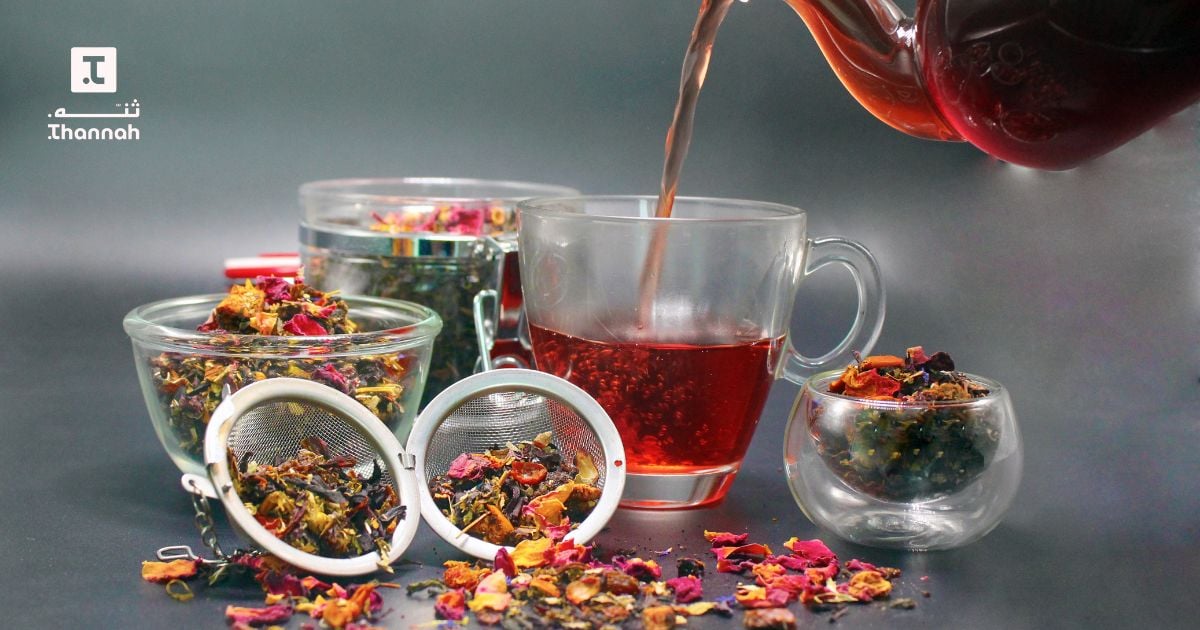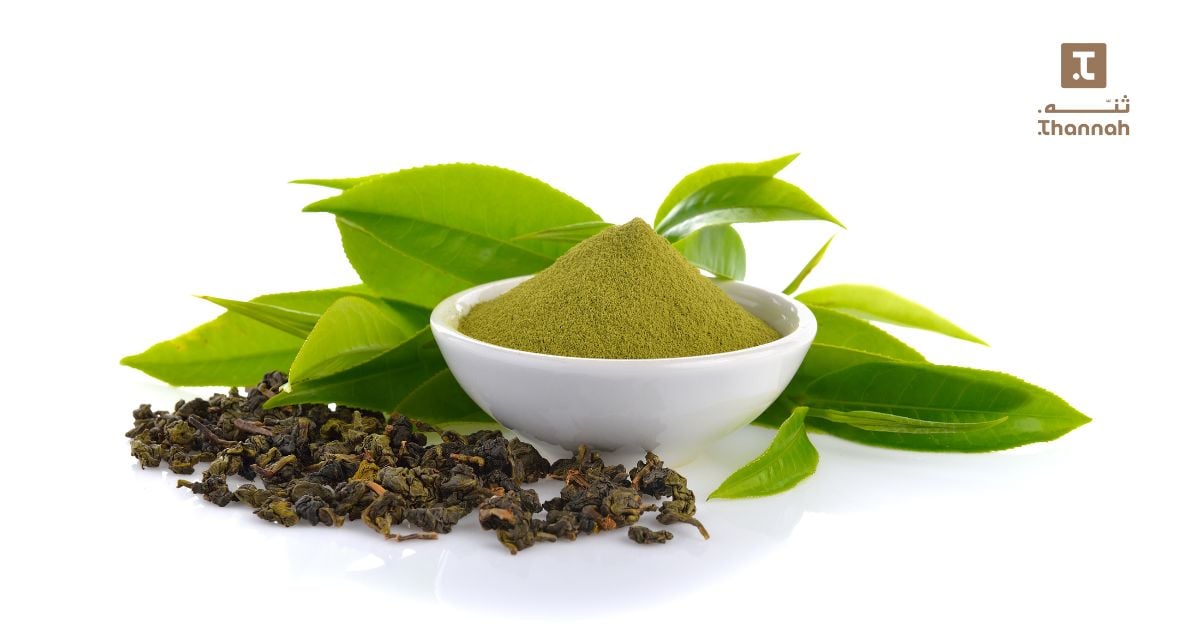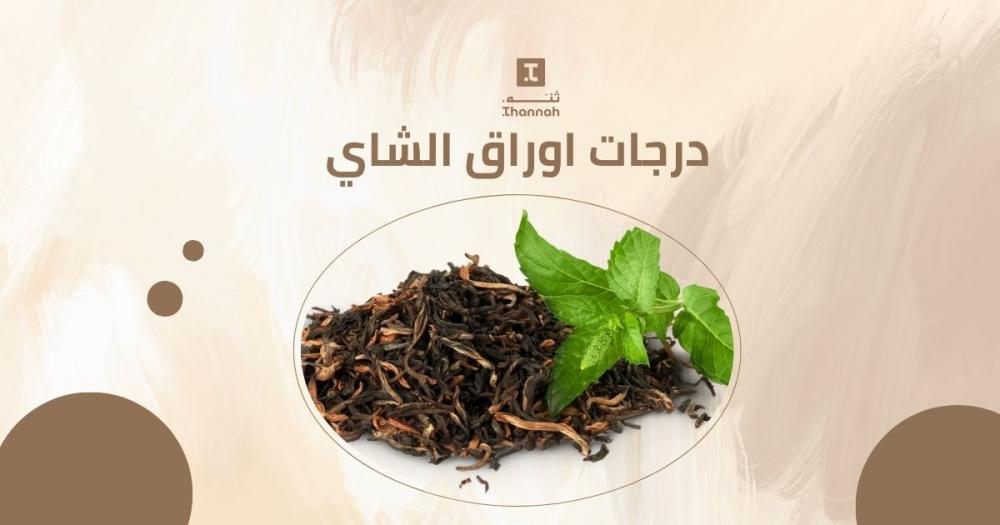There are many types and colors of tea, and the world of tea is filled with specific terms and classifications that may seem complex at first glance. However, these classifications and grades play an important role in determining the quality and flavor of your favorite cup of tea. With Thana, the best tea and coffee store in Saudi Arabia, we'll remove the ambiguity and begin to understand the different grades of tea leaves.
Tea leaf classifications
Grading tea leaves is an important step in understanding the quality level before the product reaches the consumer. In black tea, grading appears as a tool that determines fine details such as the fineness of the crop and the size of the leaves, whether they are whole, broken, or crushed.
The highest grade tea leaves are known as "orange pekoe," while "fannings" and "dust" are at the lower end. Green and oolong teas generally retain their leaves as they are without these classifications, and the same applies to some Chinese black teas, which bear their quality in their name.

Tea leaf grades and classifications
As we mentioned, tea is classified according to whether its leaves are whole, broken, or otherwise. This is what we will explain together below:
Whole Leaf
Now we will learn about the most famous whole tea leaf classifications, which are:
- Pekoe: Refers to tea made from medium to small leaves, without buds.
- Orange Pekoe: Consisting of long, thin, whole leaves, the OP classification does not refer to the orange flavor, but to the size of the leaves.
- FOP: This is a tea that contains tea buds in addition to whole leaves and is a common type.
- TGFOP: This grade also contains a high percentage of golden buds, and has a rich flavor and a special taste.
- TGFOP1: A superior grade of TGFOP with a higher concentration of golden buds.
- GFOP: This is the best high-quality Saudi tea that contains golden buds, but of a lower quality than the previously mentioned types.
Broken Leaf
Teas in this category have their leaves broken or cut during the production process, allowing for better flavor extraction during steeping. The grades are arranged in ascending order of quality:
- BP: Tea made from medium or small broken leaves.
- BOP: This type is generally used for black tea, where the leaves are broken into small pieces and give the tea a strong, quick-extracting flavor.
- FBOP: These are broken leaves that contain some golden buds, so the FBOP1 tea classification has a distinct flavor.
- TGFBOP: The highest grade of broken leaf tea, indicating a tea with a high percentage of golden buds and a superior taste.
Fannings Fine Tea
This classification is called BOPF (Fanning) or fine tea. It consists of small pieces of tea leaves, smaller than those in BOP. Teas in this category are usually used in tea bags. These bags are quickly steeped and produce a strong-flavored tea.
Dust
These are the smallest pieces of tea, almost like dust, and are usually used in tea bags and give a quick and strong flavor. There are two types of them:
- PD: Pekoe Dust
- RD: Red Dust
Finest Tea Grades OP1
Among the various tea leaf grades is the OP1 tea grade, which is one of the highest black tea grades. This grade, short for Orange Pekoe 1, guarantees you long, slender tea leaves that are carefully dried without any breakage. This grade guarantees the quality and purity of the tea leaf, and every cup of this special grade is appreciated by every tea lover.
The difference between opa and op1 tea
Ceylon tea is known for its diverse varieties and rich flavors, which sets it apart from other teas around the world. Classification of this tea focuses on determining the shape of the leaves after processing, which helps in choosing the right type for preparing either a light or strong tea. Below, we will explain the differences between the most popular Ceylon tea grades:
Similarities
Despite the clear differences between OPA and OP1 tea grades, there are common points between them, which are:
- Both types belong to the Ceylon tea family, which is known for its high quality and strong reputation in the tea world.
- They have the same source, as their leaves are picked from the same tea tree and undergo similar manufacturing processes.
- The preparation method also doesn't differ much between the two, as each type can be prepared in the usual traditional way. This allows tea lovers to explore the subtle differences between them without having to change the serving method.
Differences
Now we will begin to present the most prominent differences between the two grades of Ceylon tea leaves:
- The main difference between OPA and OP1 teas is first apparent in the size and shape of the leaves. OPA tea features large, long leaves that are often rolled. On the other hand, OP1 tea offers smaller, more compact leaves.
- The first has a light, balanced flavor, and the second has a strong, concentrated flavor.
Green Tea Grades
Green tea, known for its healthy properties and natural flavor, has multiple classifications that reflect different processing methods and leaf shapes. The most popular of these grades are:
- Sencha: The most popular green tea, whole leaves are steamed to give a cup with a distinct herbal flavor and a refreshing character.
- Gyokuro: One of the finest green teas, it is shade-grown for a specific period before harvest, giving it a rich flavor and depth not found in other types.
- Matcha: Finely ground green tea, famous for its use in traditional Japanese rituals, is characterized by its bright green color and creamy texture.
- Gunpowder: Tightly rolled leaves in a spherical shape, releasing a strong flavor when steeped, offering a distinct experience for green tea lovers.
Read also about the difference between green and red tea | Flavor, benefits, and harms
White Tea Grades
White tea is known for its purity and simple processing. Its classification is based primarily on the part of the tea plant used. The most prominent grades include:
- Silver Needle: The finest grade, consisting of only the buds, this grade gives the tea a smooth flavor and a mild aftertaste.
- White Peony: This grade contains buds with a number of small leaves, and delivers a cup with a clear flavor balanced between smoothness and depth.
- Shou Mei: This grade has larger leaves and is less carefully selected, so its flavor is slightly stronger and of lower quality compared to the higher grades.

Oolong Tea Grades
Oolong tea has a distinct character, combining the properties of green tea with the strength of black tea. Its classification is based primarily on the level of oxidation the leaves undergo during processing:
- Light Oolong: A lightly oxidized tea that retains much of the freshness of green tea, offering a smooth, grassy flavor with a slight hint of sweetness.
- Dark Oolong: A more heavily oxidized tea, closer in character to black tea, with deeper, rich flavors ranging from spices to roasted wood.
How to understand Ceylon tea symbols easily?
The symbols on tea packages carry subtle meanings that indicate the quality and nature of the leaves. When you see the word "Tippy," it means the tea contains a high percentage of fine buds, a sign of special care in selection.
The Golden symbol refers to the color of the buds after processing and reflects the degree of roasting the leaves have undergone, while Flowery indicates that the tea contains young leaves and buds that give a light, aromatic flavor.
Understanding these symbols helps you choose the right tea and gives you a clear idea of the quality of what you are actually buying.
OP1 Thane Tea is the finest ever.
Thane OP1 tea offers a distinctly high-quality tea experience. The leaves are carefully selected from the highest grades of black tea, and are characterized by their long, fresh flavor, which is evident from the first cup you drink. The store offers two types of tea, which are always the best choice for you:
- Jamr Tea Capsules : A practical and easy-to-prepare tea that combines strong flavor with quick serving.
- Northern Tea Capsules : A traditional tea with an authentic flavor that suits you as a lover of classic Shali.
Order now the best Saudi tea, Jamr or Shamali, from our store and give yourself some time to relax and unwind.
Frequently Asked Questions
How are tea leaves classified?
Tea leaves are classified according to the size and shape of the leaf after harvesting and processing. There are global classification systems, such as the Orange Pekoe system, which determines whether the leaves are whole or broken. Classification gives an idea of the leaf's appearance, not just its taste.
What is the best tea rating?
The best grades are usually those with pure, whole buds, such as Silver Needle in white tea and OP1 or TGFOP in black tea. These grades reflect the highest levels of selection and care of the leaves.
How do I know the tea classification?
You can identify the tea classification by the codes written on the package, such as OP, BOP, or FOP. These codes indicate the size and quality of the leaf, so carefully reading the product description will help you determine the classification easily.
What are the tea quality numbers?
Tea is divided into grades with specific numbers, such as 41022, 4011, 9371, 8147, 9367, 9366, 3008, and 3009. Of these grades, 41022 is considered the highest quality, while 8147 is mostly made up of broken leaves.

